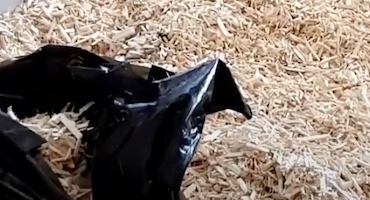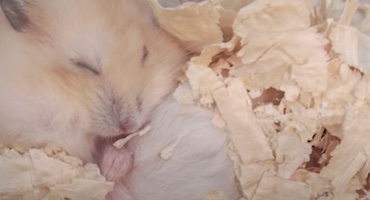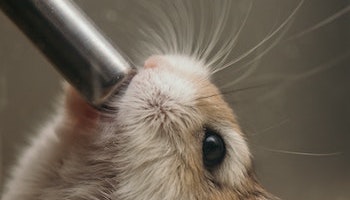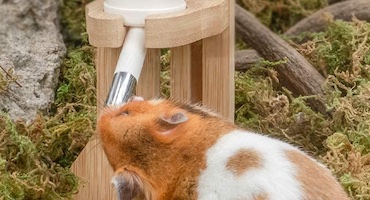Getting a new pet hamster to your home can be a fascinating event. When it comes to feeding your hamsters the right kind of food, there are a few essential things you need to know about. If you are wondering ‘can hamsters eat figs,’ then the answer is yes, hamsters can eat figs.
However, as you already know that figs are a lovely and sugary fruit. Since your hamsters are very susceptible to developing diabetes and obesity, you need to be very careful about the species of hamster you own and how much figs you are feeding them.
Here is everything you need to know about feeding your hamsters figs.
If you have Syrian hamsters at home, then you can give them a small portion of figs about the size of your fingernail just about once a week. Keep in mind that you do not want to give any more to your hamsters as figs are very sugary and can be harmful to your hamster’s health.
Campbell’s Dwarf hamsters are a smaller species of hamsters, which means that they cannot digest sweet sugary foods as quickly as their larger hamster cousins. It is best that you do not feed your dwarf hamsters figs as it is too delightful for them and can cause them to develop diabetes and obesity.
Winter Whites Dwarf hamsters are also a species of Dwarf hamsters with very delicate digestive systems. You should avoid feeding figs to your Winter Whites Dwarf hamsters as they are too sweet for your hamsters.
Roborovski hamsters are a larger species of hamsters, just like Syrian hamsters. You can feed these hamsters a small portion of figs only once a week, however, make sure that you do not give them a serving size more prominent than a quarter teaspoon as this candied fruit can cause your hamsters to develop obesity and diabetes.
Chinese hamsters are also a kind of Dwarf hamsters, which means that you should altogether avoid feeding them figs. Figs are nature’s candy, which tells you exactly how sweet and sugary this fruit is. It can be very harmful to your Dwarf hamster’s health, so avoid giving them figs.
There are several species of hamsters still found in the wild all over the world. Wild hamsters are scavengers, which means that they hunt for their foods. These hamsters mostly survive on an omnivorous diet of wild berries, fruits, vegetables, nuts, grains, seeds, leaves, and plants. They also eat small frogs, insects, and lizards if they can find them.
Domesticated hamsters often have a better, more balanced diet than the wild hamsters. You can feed them with exceptional hamster food that you will find in pet stores. Of course, you can also give them occasional fruits, vegetables, seeds, nuts, and grains for a change of taste. Before doing this, you should know exactly which foods are safe for your hamster and which ones can be dangerous for them.
What are the benefits of feeding figs to your hamsters?
Figs are lovely, fleshy fruits which have many seeds. Figs are full of fibers, calcium, potassium, iron, and antioxidants.
The fibers in figs are excellent for your hamster’s digestive health. In case your hamster is suffering from constipation, a small portion of figs in their diet can ease their bowel movement and relieve them.
Calcium contained in figs is excellent for your hamsters bone health, reducing the risk of bone diseases as well as bone and joint pain in hamsters.
Potassium in figs lowers the risk of cholesterol, heart diseases, and stroke in your hamsters.
The iron contained in figs is suitable for your hamster’s blood, so figs are a great source of natural iron for your hamsters.
Antioxidants in figs allow the toxins from your hamster’s body to be naturally flushed out. They also destroy the free radicals in your hamster’s body, thus improving their immunity and making them stronger and able to ward off diseases.
What are the risks of feeding figs to your hamster?
While figs might be very nutritious for your hamster, the fruit has a very high content of sugar in it. As you already know, your hamsters are very susceptible to developing diabetes and obesity.
When it comes to your Syrian and Roborovski hamsters, you can still feed them a small portion of figs every once in a while. However, your Dwarf hamsters are too little and cannot digest such a sweet fruit. Figs may cause your Dwarf hamsters to develop diabetes, so you should avoid feeding them this fruit.
Figs also contain a lot of small seeds which might be a choking hazard for your hamsters, so be cautious when you feed this fruit to your little hamsters
Can you give dried figs to your hamster?
As for your Syrian and Roborovski hamsters, yes, you can feed them a tiny portion of dried figs, but not more than once a week as it is delightful, sticky and sugary.
However, you should absolutely avoid feeding dried figs to your Dwarf hamsters as a treat is too sugary for them and can cause health issues.
Hamsters also have a habit of storing food in their cheek pockets, and the stickiness of the dried figs can cause it to get stuck in your hamster’s cheek. Always check your hamster’s cheek pocket and make sure there are no leftover figs in your hamster’s cage.
Can hamsters eat fig seeds and skin?
Your Syrian and Roborovski hamsters can eat the seeds and skin of figs, but make sure that you thoroughly wash the skin and cut the figs into small portions before you give it to your hamster.
Avoid giving your Dwarf hamsters fig seeds and skin thoroughly.
How many figs can you give your hamster?
You can give your Syrian and Roborovski hamsters a small portion of fig, about the size of your fingernail, just about once a week.
Do not feed figs to your Dwarf hamsters because the fruit is exceptionally sugary and not suitable for your Dwarf hamsters health.
Conclusion
When it comes to figs, these are the most important things you need to remember when you feed this delicious fruit to your hamsters. Keep your hamsters on a healthy diet of exceptional hamster food and the occasional fruit and vegetable treats.
Share
Related Posts
When it comes to feeding the right foods to your little hamster pets, many pet owners can often [...]
Hamsters are a part of the rodent family, and there are about 24 different breeds and species of [...]
Your hamsters don’t need much to stay happy in their cages. Some tasty food and treats, freshwater [...]






